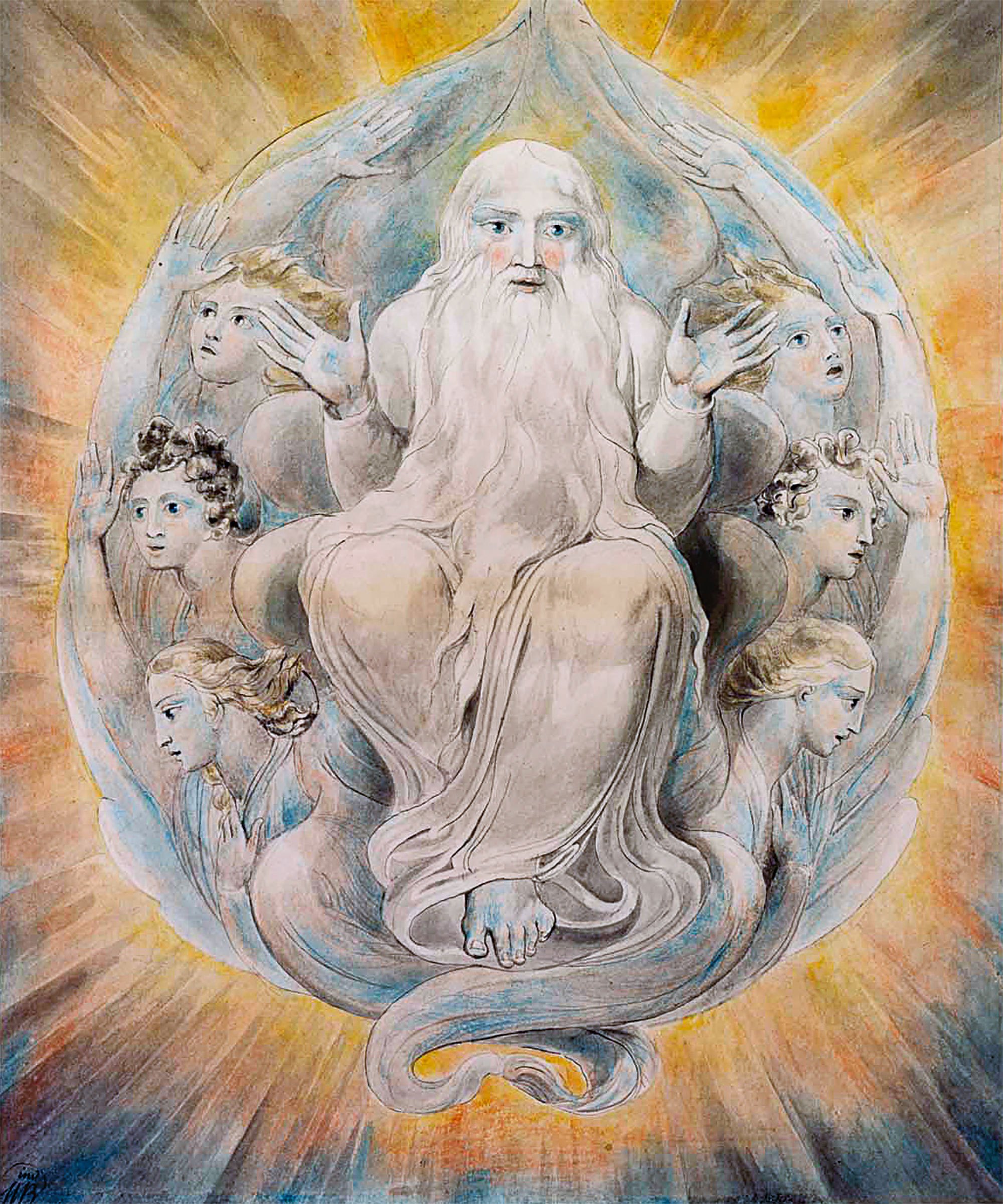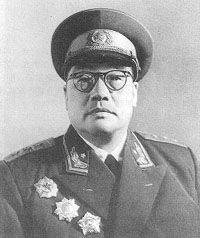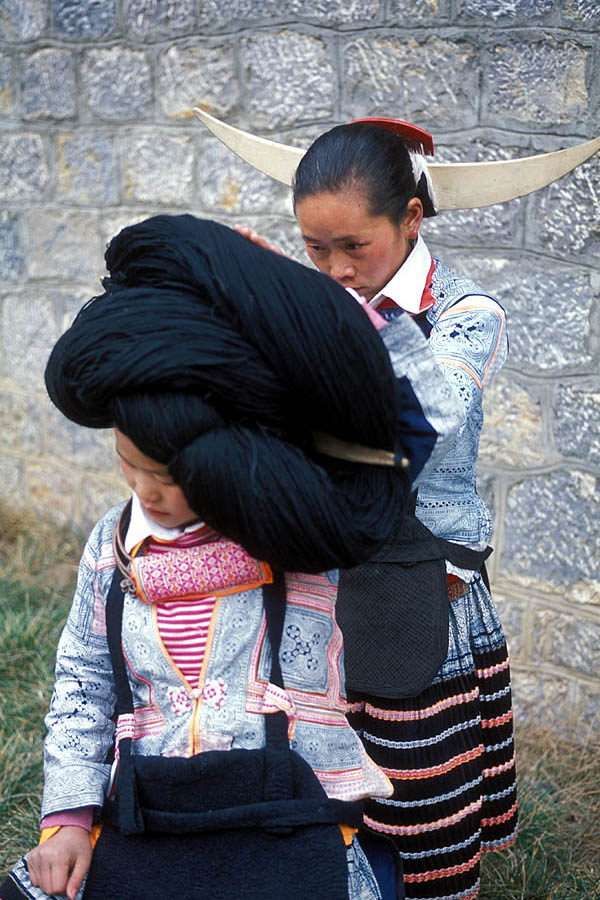|
Pangu
Pangu or Pan Gu (also sometimes spelled Peng Gu and P’an-ku) ( zh, t=盤古, ) is a primordial being and creation figure in Chinese mythology and in Taoism. According to legend, Pangu separated heaven and earth, and his body later became geographic features such as mountains and flowing water. Legend The first writer to record the myth of Pangu is thought to be Xu Zheng during the Three Kingdoms period. However, his name was found in a tomb predating the Three Kingdoms period. In the beginning, there was nothing and the universe was in a featureless, formless primordial state. This primordial state coalesced into a cosmic egg over the course of about 18,000 years. Within it, the perfectly opposed principles of yin and yang became balanced and Pangu emerged (or woke up) from the egg. Pangu inside the cosmic egg symbolizes Taiji. Pangu is usually depicted as a primitive, hairy giant with horns on his head. Pangu began creating the world: he separated yin from yang with a ... [...More Info...] [...Related Items...] OR: [Wikipedia] [Google] [Baidu] |
Creation Deity
A creator deity or creator god is a deity responsible for the creation of the Earth, world, and universe in human religion and mythology. In monotheism, the single God is often also the creator. A number of monolatristic traditions separate a secondary creator from a primary transcendent being, identified as a primary creator.(2004) Sacred Books of the Hindus Volume 22 Part 2: Pt. 2, p. 67, R.B. Vidyarnava, Rai Bahadur Srisa Chandra Vidyarnava Monotheism Atenism Initiated by Pharaoh Akhenaten and Queen Nefertiti around 1330 BCE, during the New Kingdom period in ancient Egyptian history. They built an entirely new capital city ( Akhetaten) for themselves and worshippers of their sole creator god in a wilderness. His father used to worship Aten alongside other gods of their polytheistic religion. Aten, for a long time before his father's time, was revered as a god among the many gods and goddesses in Egypt. Atenism was countermanded by later pharaoh Tutankhamun, as chron ... [...More Info...] [...Related Items...] OR: [Wikipedia] [Google] [Baidu] |
Separation Of Heaven And Earth
The separation of heaven and earth is a major event in the creation of the cosmos found in many creation myths across the world, from Egypt to New Zealand. This event functions as a necessary precondition for the rest of the creation event, as before it, the cosmos is chaotic and undifferentiated, sometimes understood in the form of a universal cosmic ocean. The cause of the separation event differs by the mythology, but is either a spontaneous process or one caused by a specific deity. Sumerian literature mentions the separation of heaven and earth more than any other literature, but all the references are in passing, while Egyptian texts place a greater emphasis on the mechanism of the separation. Ancient Near Eastern cosmology The cosmic and physical union (mythologically symbolized as a marriage) of heaven and earth is spoken of in ancient Near Eastern texts stretching back to the 3rd millennium BC. The first source that mentions their separation is from the late 3rd millenn ... [...More Info...] [...Related Items...] OR: [Wikipedia] [Google] [Baidu] |
Chinese Mythology
Chinese mythology () is mythology that has been passed down in oral form or recorded in literature throughout the area now known as Greater China. Chinese mythology encompasses a diverse array of myths derived from regional and cultural traditions. Populated with engaging narratives featuring extraordinary individuals and beings endowed with magical powers, these stories often unfold in fantastical mythological realms or historical epochs. Similar to numerous other mythologies, Chinese mythology has historically been regarded, at least partially, as a factual record of the past. Along with Chinese folklore, Chinese mythology forms an important part of Chinese folk religion and Taoism, especially older popular forms of it. Many narratives recounting characters and events from ancient times exhibit a dual tradition: one that presents a more historicized or euhemerized interpretation, and another that offers a more mythological perspective. Numerous myths delve into the creation ... [...More Info...] [...Related Items...] OR: [Wikipedia] [Google] [Baidu] |
Xu Zheng (Eastern Wu)
Xu Zheng (fl. 200s) was an Eastern Wu official who served as the " Taichang (太常)" and a Daoist author of the "Three Five Historic Records" (, literally: "Three Five Calendar") and ''Wuyun Linian Ji''. The "3-5" refers to the "Three August Ones and Five Emperors" (三皇五帝). Xu Zheng relates two different variants of the creation myth of Pangu Pangu or Pan Gu (also sometimes spelled Peng Gu and P’an-ku) ( zh, t=盤古, ) is a primordial being and creation figure in Chinese mythology and in Taoism. According to legend, Pangu separated heaven and earth, and his body later became ge .... References Eastern Wu government officials Eastern Wu historians Chinese folklorists Eastern Wu poets 3rd-century Chinese historians Chinese classicists {{China-bio-stub ... [...More Info...] [...Related Items...] OR: [Wikipedia] [Google] [Baidu] |
Yao People
The Yao people () or Dao () is a classification for various ethnic minorities in China and Vietnam. Their majority branch is also known as Mien. They originated in the areas around Changsha, which today is the capital of Hunan province. They speak a branch of the Hmong-Mien family of languages and share a strong genetic connection to the Hmong peoples. They are believed to have diverged from the Hmong around 5,800 years ago. They are one of the 56 officially recognized ethnic groups in China and reside in the mountainous southwest and south of the country. They also form one of the 54 ethnic groups officially recognized by Vietnam. They numbered 2,796,003 in the 2010 Chinese census and 891,151 in the 2019 Vietnamese census. An estimated 60,000 Yao of the Iu Mien branch reside in the United States, mostly in the Western coastal states. History China Origin myth The origins of the Yao can be traced back two millennia to Hunan around the Dongting Lake region. According to ... [...More Info...] [...Related Items...] OR: [Wikipedia] [Google] [Baidu] |
Tiamat
In Mesopotamian religion, Tiamat ( or , ) is the primordial sea, mating with Abzû (Apsu), the groundwater, to produce the gods in the Babylonian epic '' Enûma Elish'', which translates as "when on high". She is referred to as a woman, and has—at various points in the epic—a number of anthropomorphic features (such as breasts) and theriomorphic features (such as a tail). In the ''Enûma Elish'', the Babylonian epic of creation, Tiamat bears the first generation of deities after mingling her waters with those of Apsu, her consort. The gods continue to reproduce, forming a noisy new mass of divine children. Apsu, driven to violence by the noise they make, seeks to destroy them and is killed. Enraged, Tiamat also wars upon those of her own and Apsu's children who killed her consort, bringing forth a series of monsters as weapons. She also takes a new consort, Qingu, and bestows on him the Tablet of Destinies, which represents legitimate divine rulership. She is ulti ... [...More Info...] [...Related Items...] OR: [Wikipedia] [Google] [Baidu] |
Comparative Religion
Comparative religion is the branch of the study of religions with the systematic comparison of the doctrines and practices, themes and impacts (including human migration, migration) of the world's religions. In general the comparative study of religion yields a deeper understanding of the fundamental philosophical concerns of religion such as ethics, metaphysics and the nature and forms of salvation. It also considers and compares the origins and similarity (philosophy), similarities shared between the various religions of the world. Studying such material facilitates a broadened and more sophisticated understanding of human beliefs and practices regarding the sacred, numinous, Spirituality, spiritual and Divinity, divine. In the field of comparative religion, a common geographical classification of the Major religious groups, main world religions distinguishes groups such as Religion in the Middle East, Middle Eastern religions (including Abrahamic religions and Iranian rel ... [...More Info...] [...Related Items...] OR: [Wikipedia] [Google] [Baidu] |
Flood Mythology Of China
The Flood Mythology of China, or Great Flood of China (; also known as ) is a deluge theme which happened in China. Derk Bodde (1961) stated that "from all mythological themes in ancient Chinese, the earliest and so far most pervasive is about flood." The mythology also has shared characteristics with other Great Floods all over the world, although it also has unique characteristics or different focuses. Lu Yilu (2002) groups all versions of great flood into three themes: "the heroes controls the flood; "brother-sister marriage to repopulating the world"; and "the flood which is drowning the whole city along with its citizens". History and mythology Literary history The history of China as a continuously recorded literary tradition begins with the ancient documents transmitted to posterity through the ''Records of the Grand Historian''. According to these, the great-grandson (or fourth successor) of the Yellow Emperor was Yao. Beginning with the reign of Yao, additional literary s ... [...More Info...] [...Related Items...] OR: [Wikipedia] [Google] [Baidu] |
Western Zhou
The Western Zhou ( zh, c=西周, p=Xīzhōu; 771 BC) was a period of Chinese history corresponding roughly to the first half of the Zhou dynasty. It began when King Wu of Zhou overthrew the Shang dynasty at the Battle of Muye and ended in 771 BC when Quanrong pastoralists sacked the Zhou capital at Haojing and killed King You of Zhou. The "Western" label for the period refers to the location of the Zhou royal capitals, which were clustered in the Wei River valley near present-day Xi'an. The early Zhou state was ascendant for about 75 years; thereafter, it gradually lost power. The former lands of the Shang were divided into Ancient Chinese states, hereditary fiefs that became increasingly independent of the Zhou king over time. The Zhou court was driven out of the Wei River valley in 771 BC: this marked the beginning of the Eastern Zhou period, wherein political power was wielded in actuality by the king's nominal vassals. Sources The Western Zhou are known from ... [...More Info...] [...Related Items...] OR: [Wikipedia] [Google] [Baidu] |
Paul Carus
Paul Carus (; 18 July 1852 – 11 February 1919) was a German-American author, editor, a student of comparative religionOriental Ideas in American Thought from ''Dictionary of the History of Ideas: Studies of Selected Pivotal Ideas'', edited by Philip P. Wiener (Charles Scribner's Sons, New York, 1973–74). and . Life and education Carus was born in Ilsenburg, , and educated at the univer ...[...More Info...] [...Related Items...] OR: [Wikipedia] [Google] [Baidu] |
Miao People
Miao is a word that the Chinese use to designate some ethnic minority groups living in southern China and Mainland Southeast Asia. Miao is thus officially recognized by the Chinese government as one of the largest ethnic minority groups that has more than 56 official ethnicities and dialects. The Miao live primarily in the mountains of southern China. Their homeland encompasses the provinces of Guizhou, Yunnan, Sichuan, Hubei, Hunan, Guangxi, Guangdong, and Hainan. Some sub-groups of the Miao, most notably the Hmong people, have migrated out of China into Southeast Asia (Myanmar, Northern Vietnam, Laos, and Thailand). Following the communist takeover of Laos in 1975, a large group of Hmong refugees resettled in several Western nations, mainly in the United States, France, and Australia. Miao is a Chinese term, while the component groups of people have their own autonyms, such as (with some variant spellings) Hmong, Hmu, Xong (Qo-Xiong), and A-Hmao. These people (except th ... [...More Info...] [...Related Items...] OR: [Wikipedia] [Google] [Baidu] |




